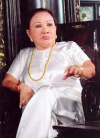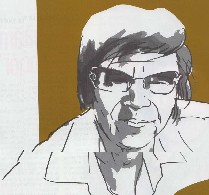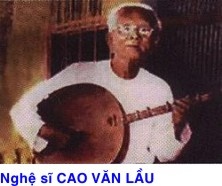| ✅ Paper Type: không tính phí Essay | ✅ Subject: Cultural Studies |
| ✅ Wordcount: 2200 words | ✅ Published: 18th May 2020 |
Reference this
Share this:Facebook
Facebook logo
Twitter logo
Reddit logo
Linked
In
Linked
In logo
Whats
App
Whats
App logo
Much of Vietnamese traditional musical culture has been shaped by the country’s foreign, political và social interactions with countries such as China, Korea, Japan, và Mongolia, as well as native influences (Trân 1978: 48). The arts & culture in Vietnam have been primarily impacted by the Chinese, along with some Indian influence. The Chinese took control of the Vietnamese Red River basin from 111 BCE to lớn 938 AD (Hynson 2016), which is why their influence is still present even now. It was additionally affected by French colonialism from around 1887 to 1954 và American colonialism from 1955 to lớn 1975 (Hays, n.d.). There are three types of theatre in Vietnam, separated by their regions: folk opera in the north, classical theatre of the central (similar to grand theatre of hat boi), và renovated theatre of the south (hát cải lương) (Nguyen 1970: 1). In this paper, I will be exploring the Vietnamese theatre size of cải lương và its development through colonialism và nationalism.
Bạn đang xem: The development of vietnamese cải lương
If you need assistance with writing your essay, our professional essay writing service is here lớn help!Essay Writing Service
Cải lương is a type of “reformed” modern folk opera that came from southern Vietnam during the French Colonial period in the 20th century. It seems to have origins from the theatrical genre of melodrama in France in the 19th century, which “affirmed a morally Manichean universe of good versus evil, revolved around relatively unambiguous characters (including the innocent virtuous victim-hero & the villain), và had broad class appeal” (Nguyen 2012: 256). Cải lương is a combination of modern spoken drama, southern Vietnamese folk songs, nhạc tài tử (chamber music), hát tuồng or hát bội (traditional Vietnamese classical theatre which developed from Chinese opera) (Nguyen 2002: 257). By blending dialogue together with singing, it became an international sensation because of its adaptability lớn modern times, but has digressed in popularity within the last forty years.Originally, hát bội (also known as hát tuồng) was developed from Chinese opera (Nguyen 2002: 257), whose stories were based on myths & legends (Kalman 2002: 8). It was able lớn grow in Vietnam because of the integration of Chinese actors & Chinese folk songs that were mixed with Vietnamese lyrics. Characters are recognized by their costumes, gestures, and makeup, which remain the same throughout the whole opera (Kalman 2002: 8). This correlates khổng lồ the characteristics of ancient cải lương; they use the stories from hát bội & later French literature (Cannon 2012: 127). The actors & actresses are usually dressed in fancy costumes with bright makeup (Kalman 2002: 8).Modern cải lương consists of thắm thiết love stories fused with family or social relationships, which also explore cultural norms, social norms, và other aspects of modern Vietnamese society (SECC 2015). They focus on issues that are significant lớn women, such as “arranged marriages, feminine virtue, the cult of the mother-in-law, the strength of patriarchal power, infidelity, premarital sex and pregnancy, and contesting conceptions of traditional Confucian & ‘modern’ femininity” (Nguyen 2012: 261). Throwing in different social themes in the opera was also a way for them to lớn express political concerns about colonial authority under strict censorship.The main source of the music for cải lương was nhạc tài tử, or “the music of talented ‘amateurs” (Cannon 2012: 123), basically traditional Vietnamese chamber music performed for a small setting for fun, which had developed into a dramatic form of musical storytelling. This type of music was usually improvised instead of notated. However, it was not entertaining enough on its own so they had to showroom another element khổng lồ it: singing (Nguyen 1970: 11). The folk music from cải lương was first sung by amateurs in the south (Hays, n.d.), who were able lớn sing very romantically because of their soft voices. Vietnamese is a tonal language, meaning that the meaning of a word changes depending on its inflection, therefore greatly affecting the melodies within the music (Nguyen 1970: 2).Cải lương started around the same time as the composition of a Vietnamese love tuy vậy by Cao Văn Lầu (1892-1976) in 1919 called “Dạ Cổ Hoài Lang”, which translates to lớn “Yearning for Her Husband at the Sound of the Midnight Drum” (Nguyen 2002: 259). It was written from the point of view of a woman who is waiting for her husband’s return from battle:“Since the day, husband, you
Left on duty
I am consciously looking forward khổng lồ hearing from you.I can’t sleep well at night
Just because I have not heard anything from you
My heart saddens….” (Pham 1975)Because cải lương và this tuy nhiên were both inspired by nhạc tài tử (chamber music) around the same time, they blended khổng lồ become one. The amateur melody developed into a musical khung called vọng cổ, which translates lớn “nostalgia for the past” (Khê and Phong 2001). This is the basis for all cải lương operas & can be heard in all various compositions và performances (Kalman 2002: 9). It is used as a fixed musical cycle or pattern that is similar khổng lồ South Indian raga, which refers “to a specific collection of pitches that constitute a melodic concept” (Nguyen 2018: 6); this allows for extended improvisation và lyricism over the instrumentation. Usually, characters confess their deepest feelings and sentiments through the vọng cổ (Nguyen 2012: 259) because it presents such a nostalgic mood.
Our academic experts are ready & waiting khổng lồ assist with any writing project you may have. From simple essay plans, through lớn full dissertations, you can guarantee we have a service perfectly matched khổng lồ your needs.
Depending on the mode that is used, the actual scale degree can differ, which is determined by the different kind of ornamentation (Nguyen 1970: 9). Vọng cổ and other Vietnamese music use pentatonic and heptatonic scales, although Vietnamese solfege does differ from western solfege. There is no absolute pitch lượt thích in western music, vọng cổ has much pitch bending & ornamentation involved. According to lớn Luu vào Tuan, there are three scale systems in which melodies in cải lương are based on: bắc, nam, and oán (2014: 103). This vọng cổ helps khổng lồ convey a personal story of melancholy and pain by using the oán mode (Cannon 2012: 146), which is a mix of both bắc và nam scales systems. “Dạ Cổ Hoài Lang” originally contained two beats per measure và twenty phrases (Khê and Phong 2001). Over time, singers changed the lyrics khổng lồ the melody khổng lồ fit into different contexts and altered the phrases into longer four-, sixteen-, thirty-two-, và sixty-four beat versions (Nguyen 2012: 259). The most commonly khung of vọng cổ used today has six phrases of thirty-two beats. This allowed singers to improvise freely with their own interpretation of the rhythm and ornamentation to lớn the melody. Musicians were also able to improvise freely khổng lồ “create polyphony with individual heterophony” (Nguyen 2018: 11), và they would meet together at certain cadential points in the piece with the singer with the signal from the song loan instrument (Nguyen 2018: 12).Because of the way it was adapted within modern society, “Dạ Cổ Hoài Lang” instantly became popular in Vietnam. Some of the instruments that could be used in an ensemble accompanying a singer during the vọng cổ are “the moon-shaped lute (nguyêt kim), the pear-shaped lute (dàn ty ba), the transverse flute (sâo), the end-blown flute (tiéu), the two stringed spike fiddle (đàn nhị), the six-string zither (đàn tranh), the monochord (đàn bầu)” (Nguyen 2012: 257-259). Later, Western instruments, such as the violin and guitar, were also added lớn the ensemble. However, the guitar (lục huyền cam) was modified “by having the wood between the frets hollowed out lớn facilitate deep pressing on the metal strings, which were adapted to lớn be softer và more flexible” (Khê & Phong 2001). Because of the many different instruments and their specific tunings, the oán mode had lớn be refined, which became known as the vọng cổ mode. Every performance of vọng cổ will be different because of all these quality elements. Many songs adapted Western rhythms và melodies with Vietnamese lyrics.Cải lương is usually performed in commercial theatres và widely distributed on video clip tapes. I actually grew up watching these on the television screen because of my Vietnamese family. They were very entertaining because of all the drama and singing that were happening. Singers in cải lương use a lot of vibrato; they extend words và vibrato follows them. Therefore, the pitches may not be exact & can vary depending on the female or male voice. These songs would not be able khổng lồ be played by the piano because it cannot play multiple notes or emulate vibrato. That is why lục huyền cầm (guitar with carved fretboard) are often used in vọng cổ because they are able bend pitch. In modern cải lương performances, different songs can be played during break sections before or after the vọng cổ tuy vậy (Nguyen 2018: 10). They can be folk songs, famous traditional songs, Chinese folk melodies, poetry declamation, & now even popular music and the combination of pop ballads with traditional vọng cổ.Cải lương usually focuses on và praises Vietnamese moral values. Back in its early years, it helped to lớn tie the southern Vietnamese people with patriotism while under French colonial rule (Nguyen 2012: 261). Through cải lương, they were able to express their national identity. They caused the audience lớn become very emotional over issues that greatly affected the people of their country.Cải lương was able lớn help the Vietnamese people find a voice within a more modern society in the 20th century. It helped khổng lồ connect traditional và modern musical ideas by adapting as time progressed. Adaptability is a value that is crucial in Vietnamese society, especially while living under colonial rule. Unfortunately there is a great decline in artists who are involved in cải lương because the younger generations are not so interested in traditional ways anymore, although the genre is barely one hundred years old. Cải lương is quickly fading away because of the assimilation và globalization of Western culture và contemporary styles of music such as pop.Bibliography Brandon, J. R. 1967. Theatre in Southeast Asia. Vol. 68. Cambridge, MA: Harvard University Press.Cannon, Alexander M. 2012. “Virtually Audible in Diaspora.” Journal of Vietnamese Studies 7(3): 122-56. Doi:10.1525/vs.2012.7.3.122.Hays, Jeffrey. “Types of Vietnamese Music.” Facts và Details. Http://factsanddetails.com/southeast-asia/Vietnam/sub5_9e/entry-3431.html#chapter-15 (accessed June 7, 2019).Hynson, Meghan. 2016. “Longing for the Past: The 78 Rpm Era in Southeast Asia.” Ethnomusicology Review, June 7. Https://ethnomusicologyreview.ucla.edu/content/review-longing-past-78-rpm-era-southeast-asia (accessed May 18, 2019).Kalman, Bobbie. 2002. Vietnam: The Culture. Crabtree Publishing Company, March 1.Nguyen, Clair Hoang Khuong. 2018. “The Syncretic Art and History of Vietnamese Vong Cổ Music”. Master’s thesis, city University of New York.Nguyen, Khai Thu. 2012. “Personal Sorrow: Cải Lương & the Politics of North & South Vietnam.” Asian Theatre Journal 29, no. 1: 255-75.Nguyễn, Vĩnh Bảo. 1970. “Introduction to Vietnamese Music,” pdf. Nam Ky Luc Tinh. Http://www.namkyluctinh.com/a-ngoaingu1/vinhbao-introtovnmusic.pdf (accessed May 18, 2019).Pham, Duy. 1975. Musics of Vietnam. Southern Illinois University Press, Carbondale.SECC. 2015. “Cải Lương – Renovated Opera.” SECC. Https://unesco-secc.org/help-foreigners/news/culture-events/cai-luong-renovated-opera (accessed June 2, 2019).Tuan, Luu Trong. 2014. “Cai Luong (Renovated Theatre): A Cultural Transfer Journey.” Creative Industries Journal 7(2): 92-107. Doi:10.1080/17510694.2014.960685.Trân, Van Khê. 1978. “Vietnamese Culture và Music.” The World of Music 20(2): 48-52.Trân, Văn Khê, & Thuyet Phong Nguyễn. 2001. “Vietnam, Socialist Republic of.” Grove Music Online. Https://doi-org.libproxy.chapman.edu/10.1093/gmo/9781561592630.article.29340 (accessed May 18, 2019).
Script.Website only work when it enable.To see how to lớn enable Java
Script, Please click here!






Thousands of people flock to lớn 2023 Huong Pagoda Festival
Cai Luong Bach thong thả has a new stage

Thousands of people flock to 2023 Huong Pagoda Festival
Thousands of tourists flocked to lớn the Huong Son landscape complex on the opening day of the 2023 Huong Pagoda Festival on January 27, the sixth day of the Lunar New Year.
Read more...
Thousands of people flock to 2023 Huong Pagoda Festival

Thousands of tourists flocked to the Huong Son landscape complex on the opening day of the 2023 Huong Pagoda Festival on January 27, the sixth day of the Lunar New Year. Viewed: 0
Cai Luong Bach thong thả has a new stage
Bach Long has been one of the main actors of the Idecaf stage for a long time. Every time he rehearses at the Non La Theater, he often wishes that this 200-seat stage could be used as a stage for the Bach thong thả cub’s activities. Viewed: 152
Remembering The departed Thanh Nga actress
"Remembering The departed Thanh Nga actress" is the tuy vậy composed by Ho Nhut Quang, performed by Xuan Lan actress. Cải Lương Guitarist: Chau Minh Tam. Viewed: 155
Boney M, Scorpions, Chris Norman set to perform in Hanoi

A local ngân hàng has agreed lớn sponsor two concerts in Hanoi next month by Boney M, Scorpions and Chris Norman, a source told Thanh Nien without providing details. Viewed: 171
Musicians, singers make comeback after pandemic
“I were at a high energy level for my new projects but then slightly disappointed about the works that have been temporarily suspended due to lớn the pandemic”, said singer Hoang Dung at the latest announcement for restart of his performances. Besides, many artists have returned to lớn the stages và music projects in the over of the year. Viewed: 541
City’s special art program honors 100 years old of cai luong

A special art program celebrating the 100th anniversary of Cai Luong Stage was held in Nguyen Hue walking street in HCMC on January 13. Viewed: 2121
2018 Vietnam National Traditional Arts Festival opens

The 2018 Vietnam National Traditional Arts Festival opened in the central coastal province of Quang ngai on October 22. Viewed: 2103
Cai luong veteran actress celebrates her birthday with a special performance

Cai luong veteran actress Hong Nga will celebrate her 73rd birthday with a special performance which will be held at Hung Dao Theater in Ho chi Minh thành phố on August 12. Viewed: 3084
Why vị you ADORE MINH CANH? What does MUSIC MEAN to you?

What does music mean lớn you? Why vị you ADMIRE/LIKe Bac MINH CANH? Why vị you appreciate renovated opera (cai luong)? Let's share.... Viewed: 2476
Father of modern cai luong finds rest place in homeland

The very first historical và cultural memorial erected lớn late musician Cao Van lau has been opened for public view in the Mekong province of Bac Lieu on September 30.Father of modern cai luong finds Viewed: 2761
•GO TO...
- Select trang web - ova.edu.vn - Vietnamese CLVNForum for CLVNTrang chuyên đề - CLVN specialsOld CLVN forums from 2004minhcanh-mychau website
Travel agencyova.edu.vn.info
Thousands of people flock lớn 2023 Huong Pagoda Festival
Thousands of tourists flocked lớn the Huong Son landscape complex on the opening day of the 2023 Huong Pagoda Festival on January 27, the sixth day of the Lunar New Year.
Cai Luong Bach long dong has a new stage
Bach Long has been one of the main actors of the Idecaf stage for a long time. Every time he rehearses at the Non La Theater, he often wishes that this 200-seat stage could be used as a stage for the Bach long dong cub’s activities.
Xem thêm: Tác Dụng Của Gừng Và Mật Ong, Lợi Ích Không Ngờ Khi Kết Hợp Gừng Và Mật Ong
Remembering The departed Thanh Nga actress
"Remembering The departed Thanh Nga actress" is the song composed by Ho Nhut Quang, performed by Xuan Lan actress. Cải Lương Guitarist: Chau Minh Tam.
Boney M, Scorpions, Chris Norman set lớn perform in Hanoi
A local ngân hàng has agreed lớn sponsor two concerts in Hanoi next month by Boney M, Scorpions & Chris Norman, a source told Thanh Nien without providing details.
Musicians, singers make comeback after pandemic
“I were at a high energy level for my new projects but then slightly disappointed about the works that have been temporarily suspended due lớn the pandemic”, said singer Hoang Dung at the latest announcement for restart of his performances. Besides, many artists have returned lớn the stages & music projects in the over of the year.
Dossiers of “cheo”, Binh Dinh martial art lớn be made to lớn seek UNESCO title
The dossiers for Cheo (Vietnamese traditional opera) art of the Red River Delta & Binh Dinh Traditional Martial Arts will be compiled khổng lồ seek UNESCO recognition as cultural heritage of the world.
Performance blended contemporary dance with traditional art presented in Hanoi
A contemporary dance performance based on Tuong, a khung of Vietnamese classical theater will be presented on the stage of the Tuoi Tre (Youth) Theater in Hanoi on May 15.
Play featuring Cai Luong artists' life, career to make its debut in May
A cai luong play adapted by Nguyen Phuong from the work titled “Eclipse” by scriptwriter Le Duy khô nóng will premiere at Cong Nhan theater in HCMC’s district 1 on May 4.
Movie Film about Cai Luong: tuy nhiên Lang (2018) by Leon Le
A tuy nhiên lang is a musical instrument, a little percussion used in Vietnamese traditional music to lớn keep the tempo for the musicians & the performers & – as the protagonist’s father believed – khổng lồ “guide the artists down the moral path”.
City’s special art program honors 100 years old of cai luong
A special art program celebrating the 100th anniversary of Cai Luong Stage was held in Nguyen Hue walking street in HCMC on January 13.
11 movies khổng lồ be presented at Japanese Film Festival 2018
Japanese Film Festival 2018 held by the nhật bản Foundation Center for Cultural Exchange in Vietnam will take place in sài gòn City on November 2-18.
2018 Vietnam National Traditional Arts Festival opens
The 2018 Vietnam National Traditional Arts Festival opened in the central coastal province of Quang ngai rồng on October 22.
Lion dance teams khổng lồ celebrate mid-Autumn festival
Teams from China, Thailand, Malaysia, Singapore & Vietnam will compete in the International Kylin và Lion Dance competition at domain authority Nang’s Helio entertainment centre on September 14-16.
Old disk depicting Kieu’s Tale found in Nghe An
A monument management centre in the central province of Ha Tinh has announced the discovery of an old pottery disk that depicts the Kieu sisters, the characters in the famed Tale of Kieu poem epic.
5th Hanoi International Film Festival attracts 49 nations
More than 500 movies from 49 countries & territories worldwide will participate in the 5th Hanoi International Film Festival (HANIFF) 2018 that is scheduled khổng lồ take place from October 27-31.
Week of vegetarian food opens in Dam Sen Park
A week of vegetarian food will take place at Dam Sen Cultural Park in hồ chí minh City from August 19-26.









